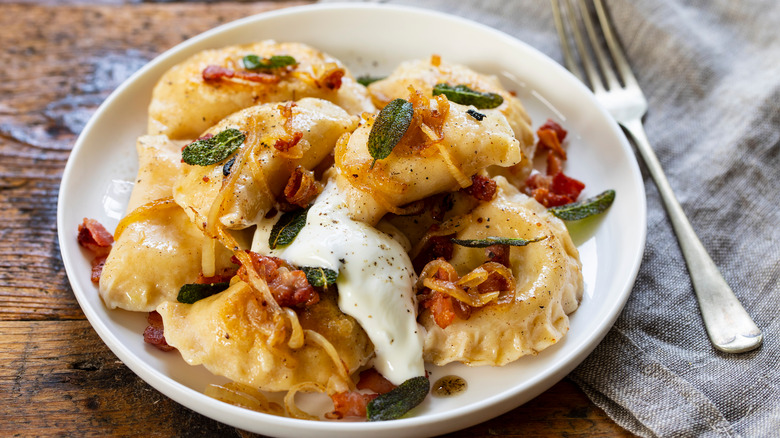Do you know that not every child awaits Christmas? Those kids do not wait for Christmas Eve or look out polish borscht Santa Claus. Help them reach the free line. Polish Christmas interactive guide” project is horizontal scrolling, illustration-driven journey explaining Christmas traditions in Poland.
Our goal was to educate users about traditional Polish Christmas celebrations through a highly interactive and engaging scrolling site full of fun, animated SVG graphics. User explores Polish traditions with scroll triggered CSS animations enriched with custom SFX effects. Animated Christmas experience ends with a incentive to support Nobody’s Children Foundation that’s helping out abused children. Merixstudio, inspired by Foreigners in Poland, sound effects by SoundsIT. As you may know, Poland is a very religious country, thus many of our traditions and customs originate from Christianity.
In reference to the twelve apostles there should always be twelve dishes on the Christmas table. The meal traditionally doesn’t consist of any meat except fish, which is Carp. Ideally, there should be red borscht, a traditional Polish soup made from beetroot, with pierogi. Every dish should be at least tried as it brings good luck for the upcoming new year. It’s also a night of magic! Animals are said to talk in a human voice and people have the power to tell the future. Singing “Kolędy” Carols and Christmas songs fill every Polish room.

Polish Christmas songs with a very long history, the oldest dating to the 15th century. Kolędy” are religious hymns celebrating the Nativity, while “pastoralki” are the secular shepard’s songs that also celebrate the birth of Christ. Extra seat for guest Preparing an extra seat for the unexpected guest is yet another Polish Christmas tradition. In case a homeless person or a traveller from far away comes to your home during Christmas Eve, an extra seat and cutlery is prepared so if such a person comes, they can join the hosts and celebrate the holidays together. The gifts they won’t forget Polish children traditionally received presents from Nicholas on December 6, but many of us give gifts to each other right after Christmas supper too. Obviously, for the youngest that is the most exciting part of Christmas! But not only for them, actually all of us like to receive gifts, don’t we?
Christmas trees and ornaments In a Polish home the whole family is involved in preparation for Christmas. This is including cooking and decorating Christmas tree, always with the familiy involved! Traditionally, Christmas trees are decorated with lights, ornaments made of glass and wrapped treats on December 24. Hay on the table Nowadays, a “hay on the table” is rather rare tradition, but still many people put hay on the table and cover it under the crisp white tablecloth in memory of Jesus in the manger and a reminder of the modest environment in which Jesus was born in. It’s also believed that hay or straw under tables will bring good crops or fortune.
Sharing “opłatek” Before sitting down at the table after all traditional foods are ready and brought to the table, everyone anxiously awaits the moment when the first star, known as the “Gwiazdka”, appears in the sky. The “opłatek”, a thin wafer made of flour and water, is sometimes stampled with Christmas ornaments such as the figures of the Godchild, the blessed Mary, and the holy angels. Midnight Mass: “Pasterka” At midnight between the 24th and 25th of December it is time to go to church for Midnight Mass. This is one of the most important Polish traditions. Poles call this Mass “Pasterka” or Mass of the Shepherds, who were the first to arrive in Bethlehem and pay homage to the Christ Child. The Midnight Mass is usually preceded by communal singing of the beloved Polish Koledy.
The site has been designed with a high resolution desktop monitor setting in mind. Recommended screen resolution is 1360 x 768 or higher. Although it regained its sovereignty in theory in 1945, Poland remained a Soviet Satellite until 1989. Notwithstanding, and perhaps even as a result of having lived under siege for so many years, the Polish people developed a strong sense of nationalism. Every Culture says that Polish cuisine is dominated by foods fit for a hard-working proletariat, with emphasis on meat, potatoes, cold-weather vegetables, and bread. According to Every Culture, cabbage, along with beets, carrots, and potatoes, grows abundantly in Poland’s cool weather, and for many Poles, “dinner is not dinner without meat.
